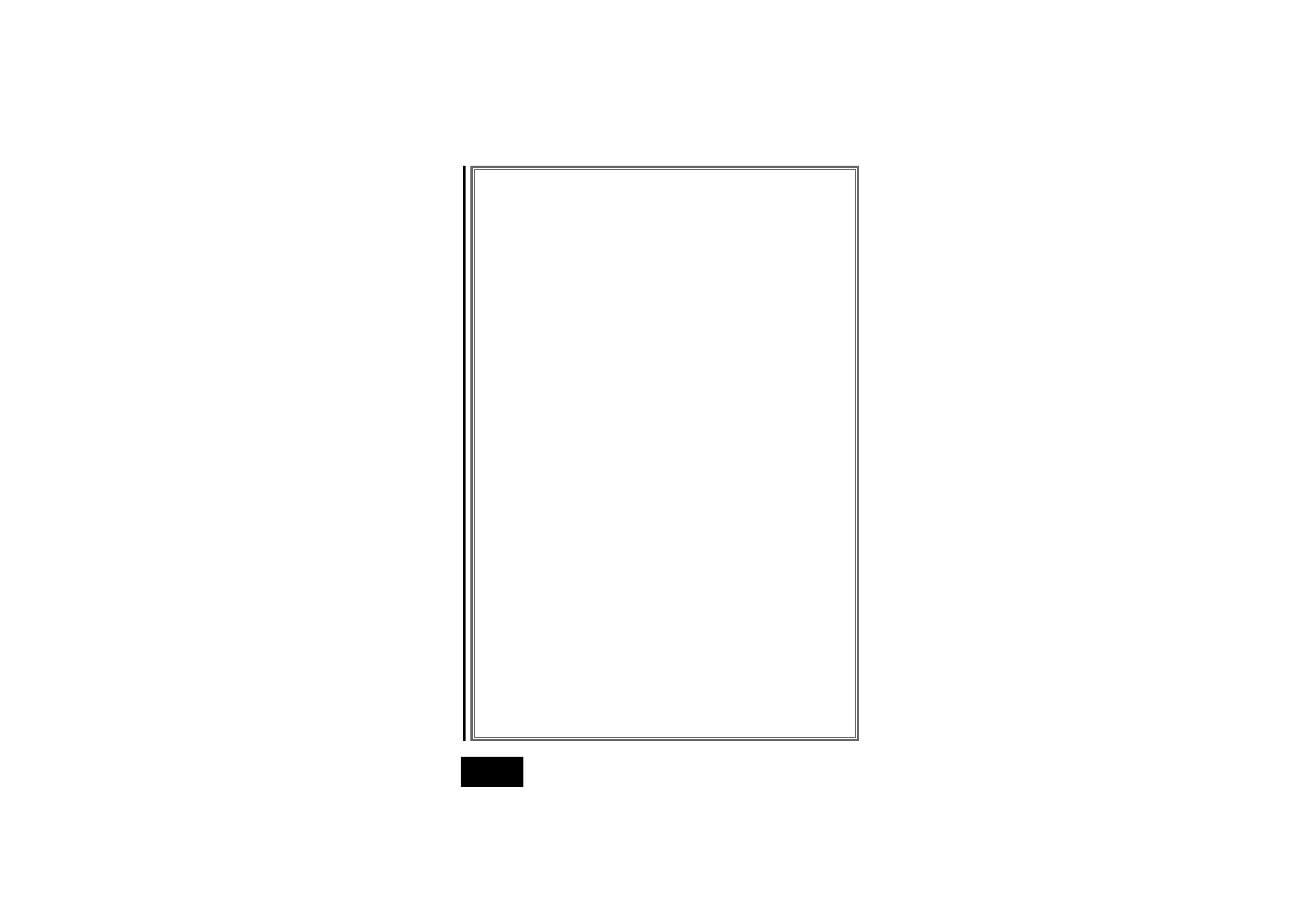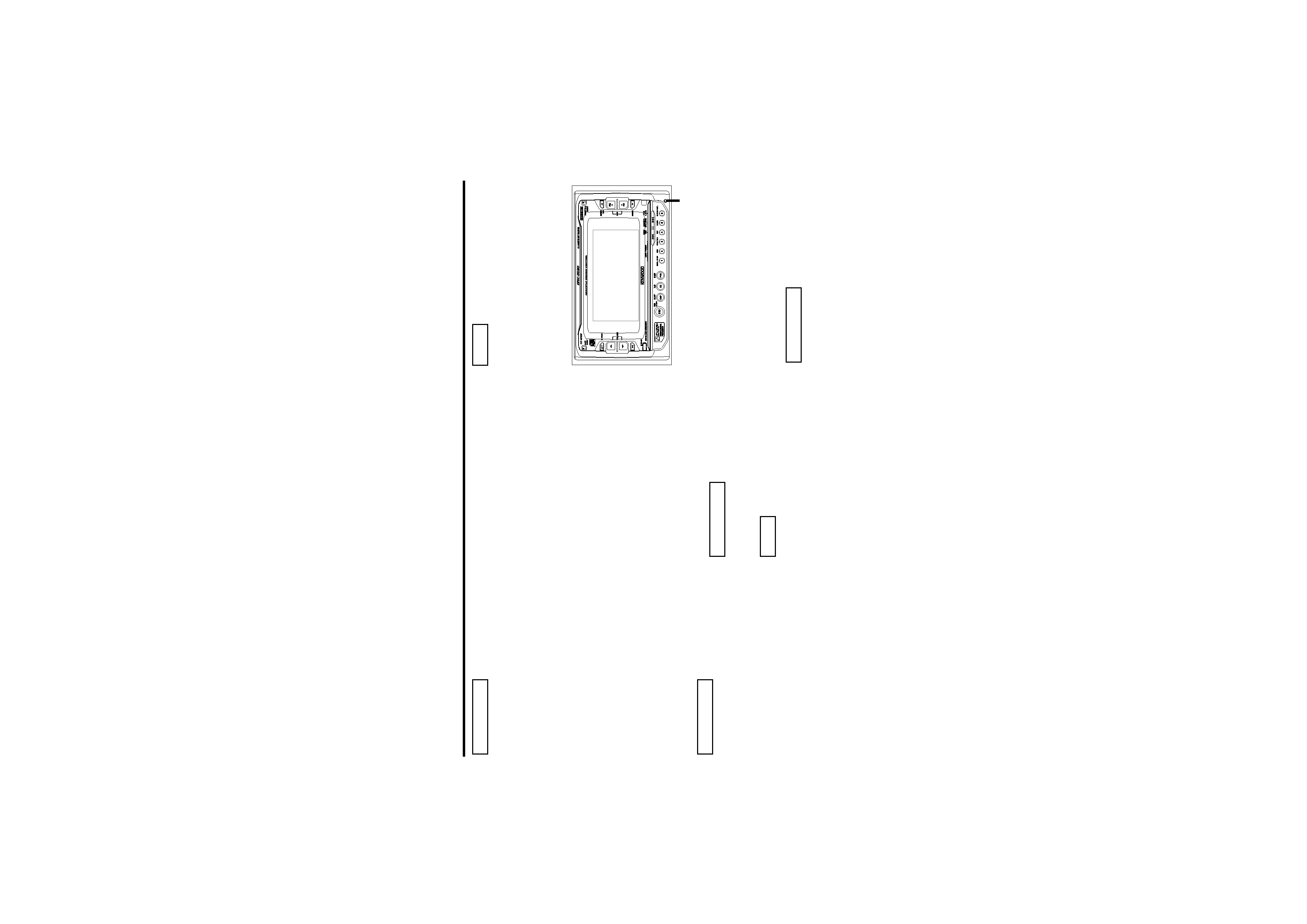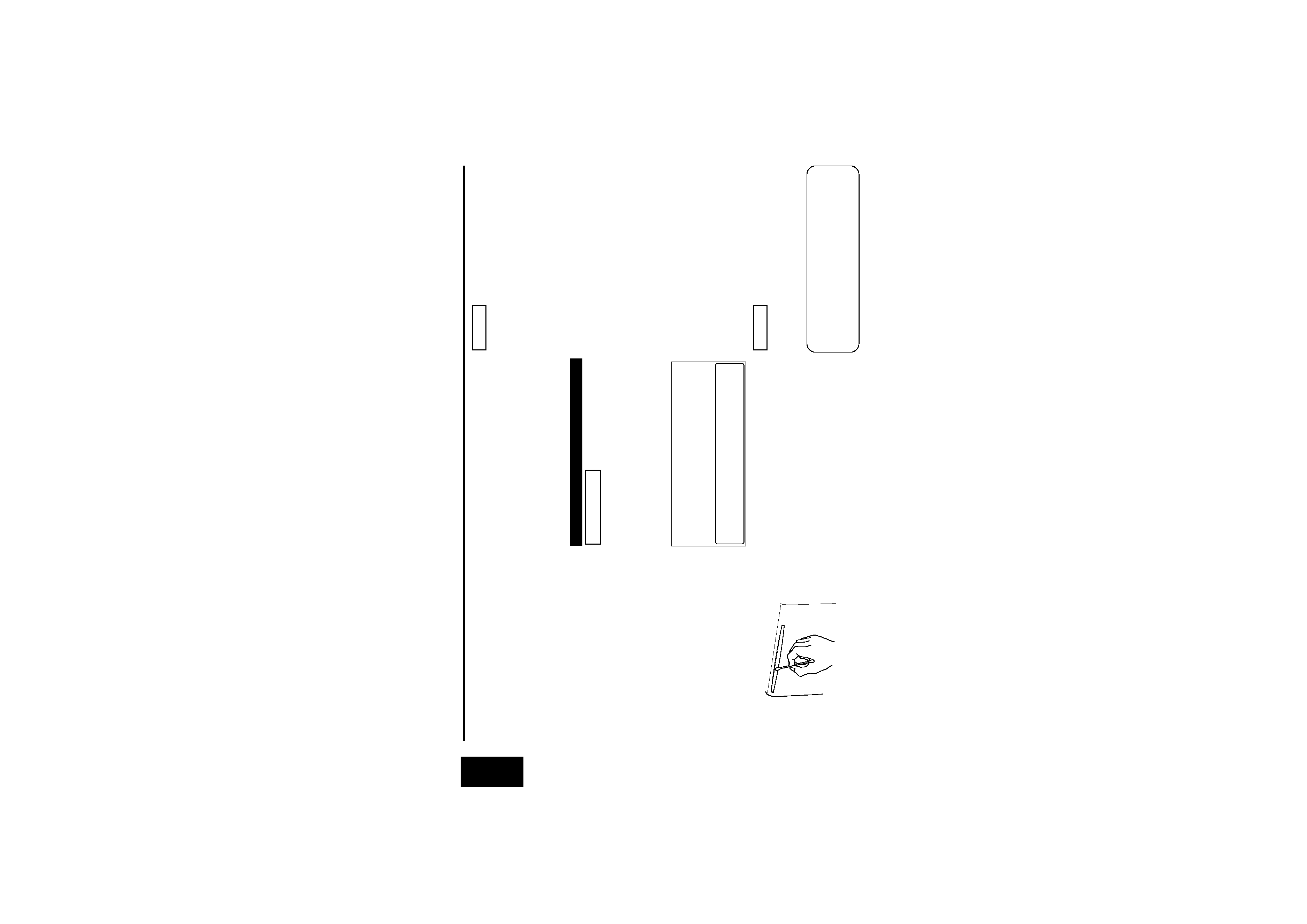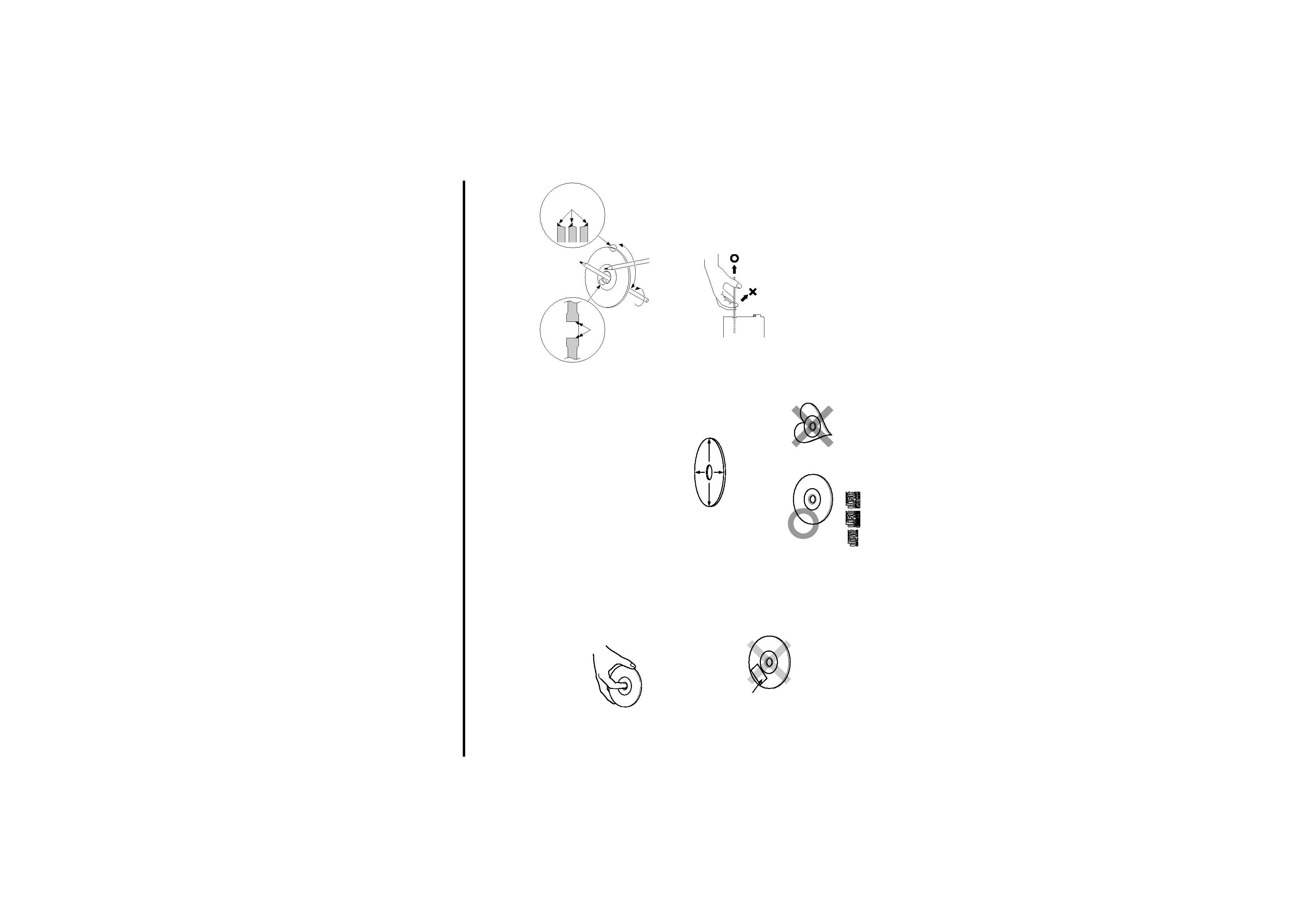
DPX-6020
© PRINTED IN JAPAN B64-2050-00 (K) (+)
02/ 6 5 4 3 2 1 01/12 11 10 9 8 7 6 5
DOUBLE DIN SIZED CD/CASSETTE RECEIVER
INSTRUCTION MANUAL
Take the time to read through this instruction manual.
Familiarity with installation and operation procedures will help you obtain
the best performance from your new double din sized CD/cassette receiver.
For your records
Record the serial number, found on the back of the unit, in the spaces designated
on the warranty card, and in the space provided below. Refer to the model and
serial numbers whenever you call upon your KENWOOD dealer for information or
service on the product.
Model DPX-6020 Serial number
DPX-6020(K) Cover
01.12.25
11:28 AM
Page 1

-- 2 --
English
Contents
Safety precautions ..........................................................3
Handling Compact discs .................................................5
General features
Power...........................................................................................................6
Switching Modes .........................................................................................6
Volume .........................................................................................................7
Attenuator ....................................................................................................7
Adjusting Clock ............................................................................................7
Audio Control Setting ...................................................................................7
Panel Angle Adjustment ..............................................................................8
Switching Display.........................................................................................8
Tuner features
Tuning ..........................................................................................................9
Station Preset Memory ................................................................................9
Preset Tuning .............................................................................................10
Clean Reception System Circuit (CRSC) ....................................................10
Switching Display for Tuner .......................................................................10
Direct Access Tuning (Function of remote control) ...................................10
Station Name Preset (SNPS)......................................................................11
Station Name Preset Play (SNPP) ..............................................................12
Cassette player features
Playing Cassette Tapes ..............................................................................13
Fast Forwarding and Rewinding Cassette Tapes.......................................13
Using Dolby B Noise Reduction .................................................................13
Switching Tape Types ................................................................................13
Using Direct Program Search System (DPSS) ...........................................14
Using DPSS with Remote ..........................................................................14
Blank Skip ..................................................................................................14
Index Scan .................................................................................................15
Music Repeat .............................................................................................15
Switching Display.......................................................................................15
CD/External disc control features
Playing CDs ................................................................................................16
Playing Other Disc mode ...........................................................................17
Switching Display for Discs .......................................................................17
Fast Forwarding and Reversing Disc Play ..................................................18
Track Search ..............................................................................................18
Disc Search ................................................................................................18
Direct Track Search ....................................................................................18
Direct Disc Search .....................................................................................19
Track / Disc Repeat ....................................................................................19
Track Scan..................................................................................................19
Disc Scan ...................................................................................................20
Random Play ..............................................................................................20
Magazine Random Play..............................................................................20
Text / Title Scroll ........................................................................................21
Disc Name Preset Play (DNPP) ..................................................................21
Presetting Disc Names ..............................................................................22
DSP features .................................................................23
DSP (Digital Signal Processor) ...................................................................24
Sound Field Control....................................................................................24
Nuance Level Adjustment..........................................................................24
DSP Bass Boost Control Level Adjustment ...............................................24
Compression Control Level Adjustment ....................................................25
Position Setting ..........................................................................................25
Room Size Setting .....................................................................................25
DSP Setting Preset Memory......................................................................26
Graphic Equalizer features
Graphic Equalizer .......................................................................................27
Preset Equalizer (KBS - Kenwood Built-in Sound) Selection ......................27
Graphic Equalizer Adjustment ....................................................................27
Graphic Equalizer Preset Memory .............................................................27
Spectrum Analyzer Display Selection ........................................................28
Function set system
Function Set System..................................................................................29
Touch Sensor Tone ....................................................................................30
Switching Preout........................................................................................30
Digital Crossover Network .........................................................................30
External Amp Control .................................................................................30
Opening Display ...............................................................................................30
Security Code.............................................................................................31
Frequency Setting of High Pass Filter for Front Output.............................32
Frequency Setting of High Pass Filter for Rear Output..............................32
Filter Slope Setting of High Pass Filter ......................................................32
Frequency Setting of Low Pass Filter for Non-fading Output ....................32
Filter Slope Setting of Low Pass Filter .......................................................32
Time Alignment for Front Output...............................................................32
Time Alignment for Rear Output................................................................32
Time Alignment for Non-fading Output......................................................32
External Amp Control Setting ....................................................................32
Selecting Tuning Mode ..............................................................................33
Auto Memory Entry ...................................................................................33
Text / Title Scroll ........................................................................................33
Basic Operations of remote ..........................................34
Installation
Accessories................................................................................................37
Installation Procedure ................................................................................37
Connecting Wires to Terminals..................................................................38
Installation ..................................................................................................39
Troubleshooting Guide .................................................42
Specifications ...............................................................46
DPX-6020_K_U.S
01.12.25
1:57 PM
Page 2

-- 3 --
To prevent injury or fire, take the following
precautions:
· Insert the unit all the way in until it is fully locked in
place. Otherwise it may fall out of place when
jolted.
· When extending the ignition, battery, or ground
wires, make sure to use automotive-grade wires or
other wires with a 0.75mm2 (AWG18) or more to
prevent wire deterioration and damage to the wire
coating.
· To prevent a short circuit, never put or leave any
metallic objects (such as coins or metal tools) inside
the unit.
· If the unit starts to emit smoke or strange smells,
turn off the power immediately and consult your
Kenwood dealer.
· Make sure not to get your fingers caught between
the faceplate and the unit.
· Be careful not to drop the unit or subject it to strong
shock.
The unit may break or crack because it contains
glass parts.
To prevent damage to the machine, take
the following precautions:
· Make sure to ground the unit to a negative 12V DC
power supply.
· Do not open the top or bottom covers of the unit.
· Do not install the unit in a spot exposed to direct
sunlight or excessive heat or humidity. Also avoid
places with too much dust or the possibility of
water splashing.
· Do not install the unit in a spot exposed to direct
sunlight or excessive heat or humidity. Also avoid
places with too much dust or the possibility of
water splashing.
· Do not subject the faceplate to excessive shock, as
it is a piece of precision equipment.
2CAUTION
2WARNING
· When replacing a fuse, only use a new one with the
prescribed rating. Using a fuse with the wrong
rating may cause your unit to malfunction.
· To prevent a short circuit when replacing a fuse,
first disconnect the wiring harness.
· Do not place any object between the faceplate and
the unit.
· Do not use your own screws. Use only the screws
provided. If you use the wrong screws, you could
damage the unit.
IMPORTANT INFORMATION
About the disc changer to be connected:
To connect a disc changer having the "O-N" switch
to this unit, set the "O-N" switch to "N".
When you connect a model with no "O-N" switch,
the converter cord CA-DS100 available as an option
may be required. For details, consult your Kenwood
dealer.
If a model with no "O-N" switch is connected, some
unavailable functions and information that cannot be
displayed are generated, such as the DNPS, DNPP,
Magazine random play, and CD Text display.
Note that none of the KDC-C100, KDC-C302, C205,
C705, and non-Kenwood CD changers can be
connected.
You can damage both your unit and the CD
changer if you connect them incorrectly.
The illustrations of the display and the panel
appearing in this manual are examples used to
explain more clearly how the controls are used.
Therefore, what appears on the display in the
illustrations may differ from what appears on the
display on the actual equipment, and some of the
illustrations on the display may represent
something impossible in actual operation.
NOTE
2CAUTION
· CD-Rs and CD-RWs which have not undergone
finalization processing cannot be played. (For more
information on finalization processing, refer to the
manual for your CD-R/CD-RW writing software or
CD-R/CD-RW recorder.) Additionally, depending on
the recording status, it may prove impossible to
play certain CDs recorded on CD-R or CD-RW.
· If you experience problems during installation,
consult your Kenwood dealer.
· If the unit does not seem to be working right, try
pressing the reset button first. If that does not solve
the problem, consult your Kenwood dealer.
Cleaning the Unit
If the faceplate of this unit is stained, wipe it with a
dry soft cloth such as a silicon cloth.
If the faceplate is stained badly, wipe the stain off
with a cloth moistened with neutral cleaner, then
wipe neutral detergent off.
Applying spray cleaner directly to the unit may
affect its mechanical parts. Wiping the front panel
with a hard cloth or using a volatile liquid such as
thinner or alcohol may scratch the surface or
erases characters.
2CAUTION
NOTE
Safety precautions
DISP
Reset button
DPX-6020_K_U.S
01.12.25
1:57 PM
Page 3

-- 4 --
English
Handling Cassette Tapes
· Do not play a cassette whose tape has gone slack.
In such a case, wind it tight using a pencil or the like
in one of the spools. Playing slack cassette tapes
can result in the tape tangling around the capstan
and/or pinch rollers, causing trouble.
· Do not play a deformed cassette or one whose
label is starting to come off, as it can cause the unit
to malfunction.
· Do not leave tapes in hot places, such as on
dashboards and other spots exposed to direct
sunlight, or near heater outlets. They can deform
the cassette.
· Avoid using extremely long cassette tapes, such as
100-minute-long tapes. Such tapes are very thin,
and can tangle easily around the pinch rollers or
other parts inside the unit, causing unit failure.
· Remove a cassette tape from the unit when not
listening to it for a while. If you leave a tape in the
unit too long, it may stick to the tape head and
cause unit malfunction.
Cleaning the Tape Head
After you have listened to many cassettes over a
long period of time, magnetic powder from the
tapes and dust accumulates on the tape head,
causing noise and a deterioration in sound quality.
Clean the tape head using a cleaning tape or
cleaning kit designed for use in car audio systems.
Cleaning the CD Slot
As dust tends to accumulate in the CD slot, clean it
every once in a while. Your CDs can get scratched if
you put them in a dusty CD slot.
Lens Fogging
Right after you turn on the car heater in cold
weather, dew or condensation may form on the
lens in the CD player of the unit. Called lens
fogging, CDs may be impossible to play. In such a
situation, remove the disc and wait for the
condensation to evaporate. If the unit still does not
operate normally after a while, consult your
Kenwood dealer.
Use of controls or adjustments or performance
of procedures other than those specified herein
may result in hazardous radiation exposure.
In compliance with Federal Regulations,
following are reproductions of labels on, or
inside the product relating to laser product
safety.
Location : Bottom Panel
FCC WARNING
This equipment may generate or use radio
frequency energy. Changes or modifications to
this equipment may cause harmful interference
unless the modifications are expressly approved
in the instruction manual. The user could lose
the authority to operate this equipment if an
unauthorized change or modification is made.
2CAUTION
Safety precautions
KENWOOD CORPORATION
2967-3, ISHIKAWA-CHO,
HACHIOJI-SHI
TOKYO, JAPAN
KENWOOD CORP. CERTIFIES THIS EQUIPMENT
CONFORMS TO DHHS REGULATIONS N0.21 CFR
1040. 10, CHAPTER 1, SUBCHAPTER J.
This equipment has been tested and found to
comply with the limits for a Class B digital
device, pursuant to Part 15 of the FCC Rules.
These limits are designed to provide
reasonable protection against harmful
interference in a residential installation. This
equipment may cause harmful interference
to radio communications, if it is not installed
and used in accordance with the instructions.
However, there is no guarantee that
interference will not occur in a particular
installation. If this equipment does cause
harmful interference to radio or television
reception, which can be determined by
turning the equipment off and on, the user is
encouraged to try to correct the interference
by one or more of the following measures:
· Reorient or relocate the receiving antenna.
· Increase the separation between the
equipment and receiver.
· Connect the equipment into an outlet on a
circuit different from that to which the
receiver is connected.
· Consult the dealer or an experienced radio/TV
technician for help.
This Class B digital apparatus complies with
Canadian ICES-003.
NOTE
NOTE
2Warning
Manufactured under license from Dolby
Laboratories.
"Dolby" and the double-D symbol are
trademarks of Dolby Laboratories.
DPX-6020_K_U.S
01.12.25
1:57 PM
Page 4

-- 5 --
Handling Compact discs
Playing a CD that is dirty, scratched
or warped can cause the sound to
skip and the unit to operate
incorrectly, resulting in worsened
sound quality. Take the following
precautions to prevent your CDs from
getting scratched or damaged.
Handling CDs
· Do not touch the recorded side of the CD (the
side opposite the label) when holding it.
· The reflective film on a CD-R or a CD-RW is
more fragile than that on an ordinary music CD,
and may peel off if scratched. Fingerprints on a
CD-R or CD-RW are also more likely to cause
skipping when the disc is played. For these
reasons, handle the disc very carefully. Detailed
handling instructions will appear on the CD-R or
CD-RW package: read this information carefully
before using the disc.
· Do not stick tape on either side of the CD.
Do Not Load CD Accessories
Do not use commercially available CD
accessories that can be loaded into the CD slot,
such as stabilizers, protective sheets, or CD
cleaning discs, since they can cause the unit to
malfunction.
Storing CDs
· Do not store CDs in areas exposed to direct
sunlight (such as a car seat or the dashboard)
or other hot places.
A CD-R or CD-RW is more susceptible than a
music CD to damage from high temperatures
and humidity, and in some cases, may
become unusable if left in the car for long
periods of time.
· Remove CDs from the unit when not listening
to them for a while, and put them back in their
cases. Do not pile up CDs that are removed
from their cases or prop them against
something.
Cleaning CDs
If a CD has gotten dirty, wipe it off gently using
a commercially available cleaning cloth or a soft
cotton cloth, starting from the center of the disc
and moving outward. Do not clean CDs with
conventional record cleaners, anti-static
formulas, or chemicals such as paint thinner or
benzene.
Do Not Use Special Shape CDs
· Be sure to use round shape CDs only for this
unit and do not use any special shape CDs.
Use of special shape CDs may cause the unit
to malfunction.
· Be sure to use CDs with disc mark
only for this unit.
Checking New CDs for Burrs
When playing a new CD for the first time, check
that there are not any burrs stuck to the
perimeter of the disc or in the central hole. CDs
with burrs stuck on them may not load properly
or may skip while playing. Remove burrs using
a ballpoint pen or a similar utensil.
Removing the CD
Only remove the CD from the machine in a
horizontal direction, holding it flat. You may
damage the surface of the CD if you try pulling
it down as it ejects.
Do Not Use CDs with Sticker on the
Labeled Side
Do not use the CD with the label sticker stuck
on it.
Using such a CD may cause the CD to be
deformed and the sticker to peel off, resulting
in malfunction of the unit.
Tape
Burrs
Burrs
DPX-6020_K_U.S
01.12.25
1:57 PM
Page 5
